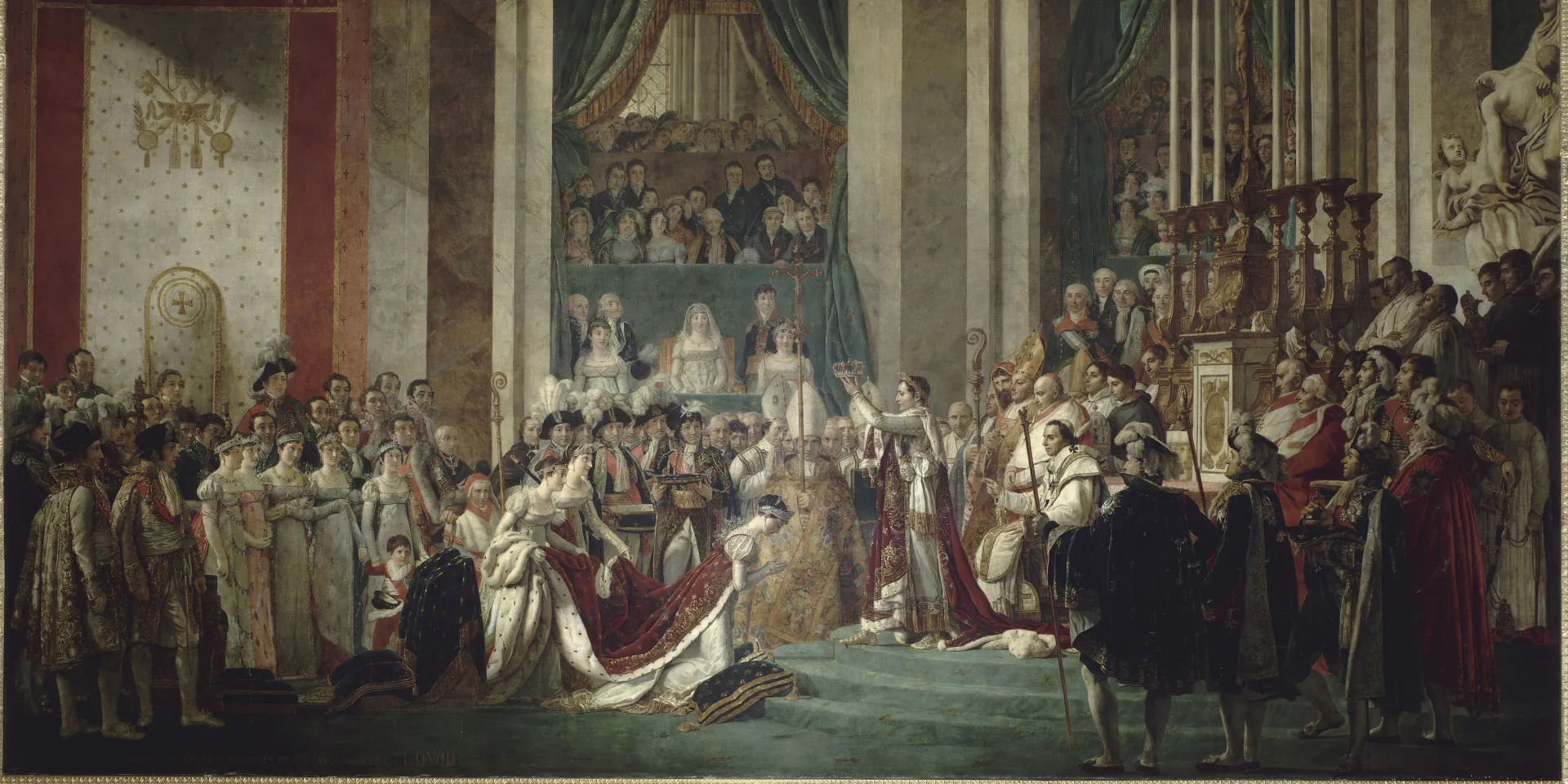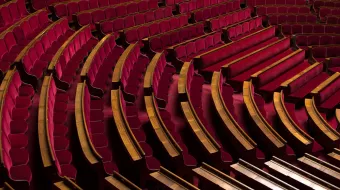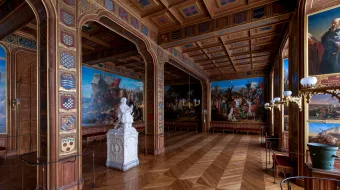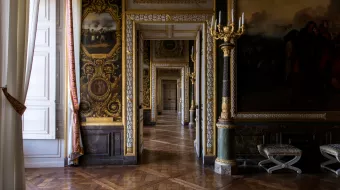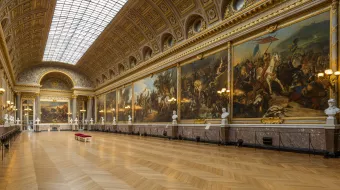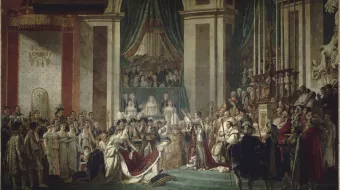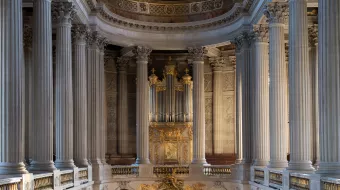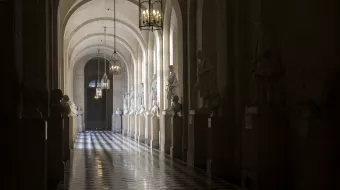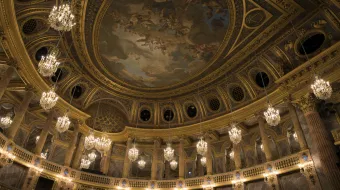To the glory of the emperor
This large space adjoining the royal apartments first served as the palace’s second chapel (1672-1682), and then the Great Guard’s Room “for both the King and the Queen” (1682-1789). In 1833 it became a room devoted to the glory of Napoleon Bonaparte, First Consul and then Emperor of the French. The plan was to display the greatest paintings of his reign, which could not be placed anywhere else in the palace: the two immense paintings commissioned from Jacques-Louis David to commemorate the ceremonies celebrating Napoleon’s crowning as Emperor of the French: The Coronationof 2 December 1804 (1805-1808), and The Distribution of the Eagle Standards on 5 December 1804 (1808-1810). The decor that serves as a backdrop to these works was created thanks to the combined talents of palace architect, Frédéric Nepveu, sculptor Jean-Baptiste Plantar (trophies on the wood panelling), and the workshop of painter Jean Alaux (the ceiling arch).
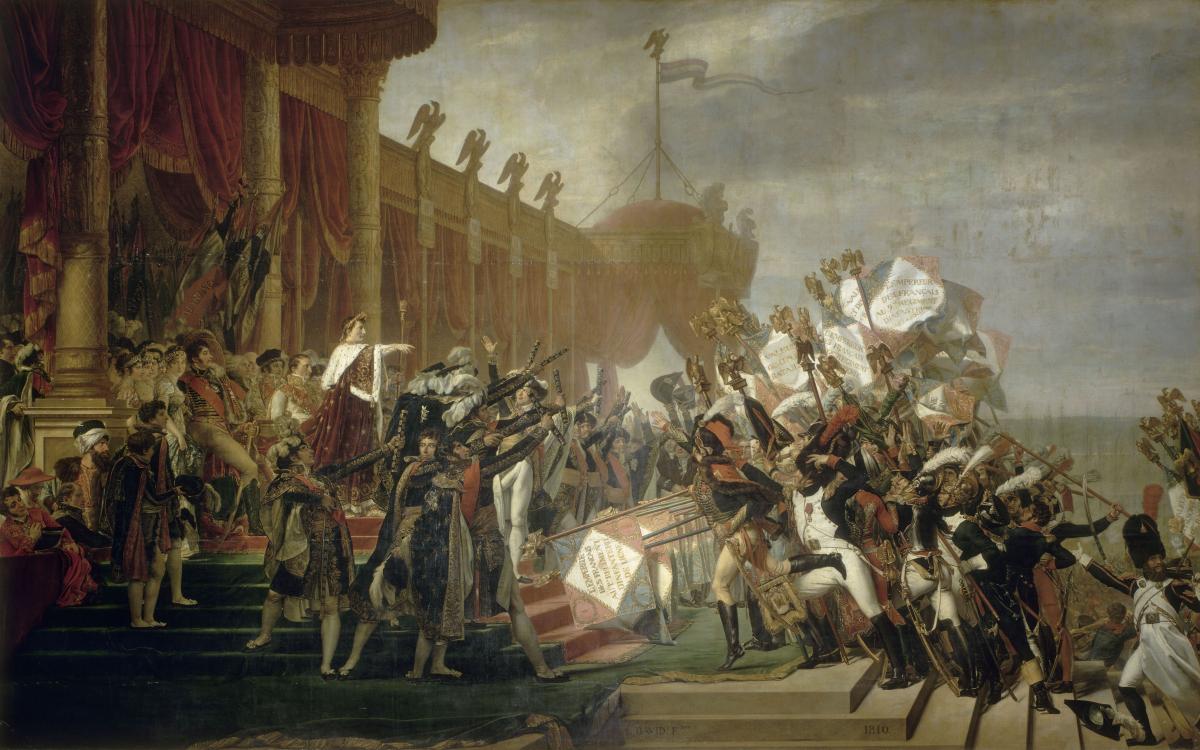
David, The Distribution of the Eagle Standards on 5 December 1804
© RMN (Château de Versailles) / Peter Willi
A Napoleonic programme
In addition to David’s paintings, there is also the enormous Battle of Abukir on 25 July 1799 by Gros, commissioned by Joachim Murat, the emperor’s brother-in-law, when he was King of Naples. It commemorates one of the most memorable cavalry charges of Napoleon’s youth, during the Egypt campaign.
The room’s Napoleonic programme included other works as well: on the ceiling, the Allegory of 18 Brumaire by Callet, also called France Saved, symbolizing Napoleon Bonaparte’s seizure of power; and above the door, four allegories by François Gérard: The Warrior’s Courage, Genius Rising Despite Desire, Constancy, and Clemency Leaning on Force.
Lastly, there are four portraits between the windows: General Bonaparte in Italy, by Rouillard; Napoleon I, Emperor of the French, by Alexandre Dufay, known as Casanova (a painting from that time, adapted here); and the two Empresses Joséphine and Marie-Louise, by Dedreux-Dorcy.
In the centre of the room stands the Column from the German Campaign, also called the “Austerlitz Column”, which Napoleon commissioned from the Sèvres Royal Porcelain Manufactory to commemorate his first imperial victories. Completed in 1807, and placed the following year in the State Apartments at the Palais des Tuileries, it is one of the masterpieces of Sèvres porcelain production during the Empire. It was created in collaboration with Brongniart (drawing), Bergeret (painting) and Thomire, Duterme and Co. (bronze mounting).
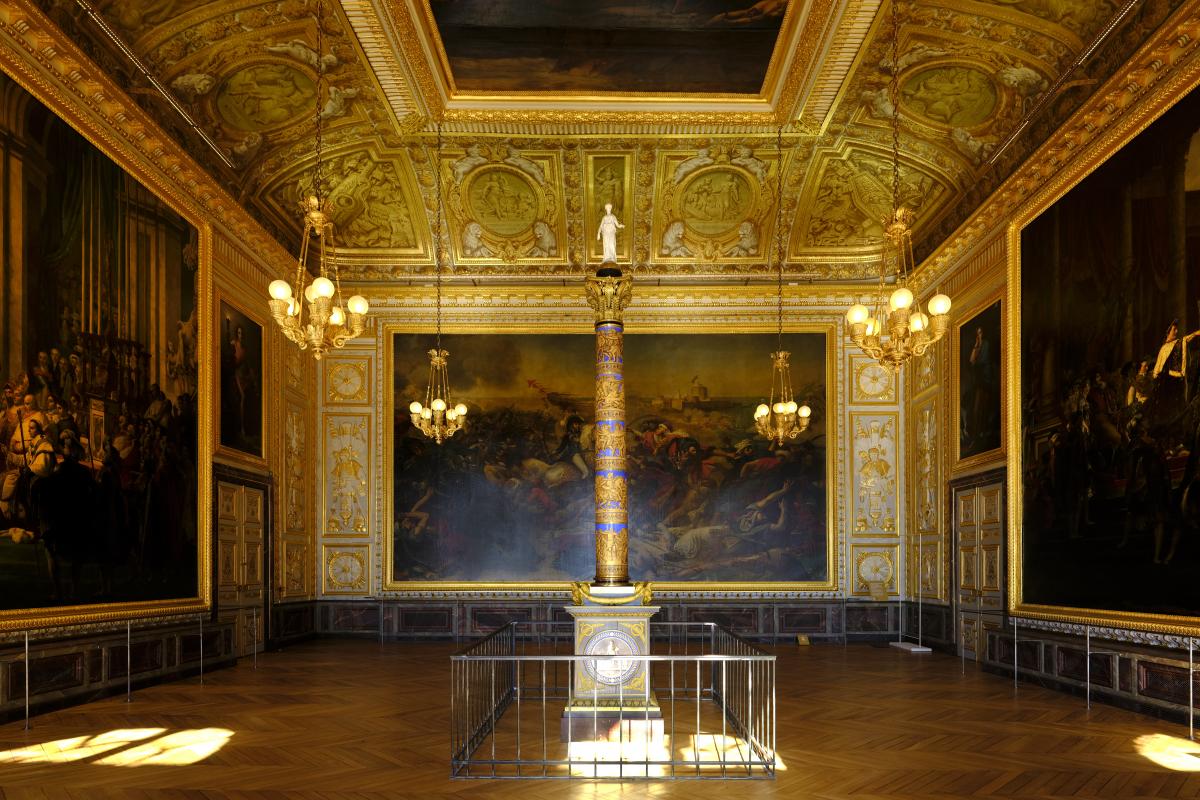
The Coronation Room
© EPV/Didier Saulnier
About the Coronation painting
The Coronation, which was located in this room and actually shows the coronation of Empress Josephine, was moved from Versailles to the Louvre in Paris in 1889. It has since been replaced by a second copy that David painted in Paris and then in Brussels in 1808-1822, for a group of American businessmen. The painting was shown across the United States and Europe throughout the 19th century, before Versailles acquired it in 1947. It was placed in this room the following year, thus recreating this beautiful space as imagined by Louis-Philippe.
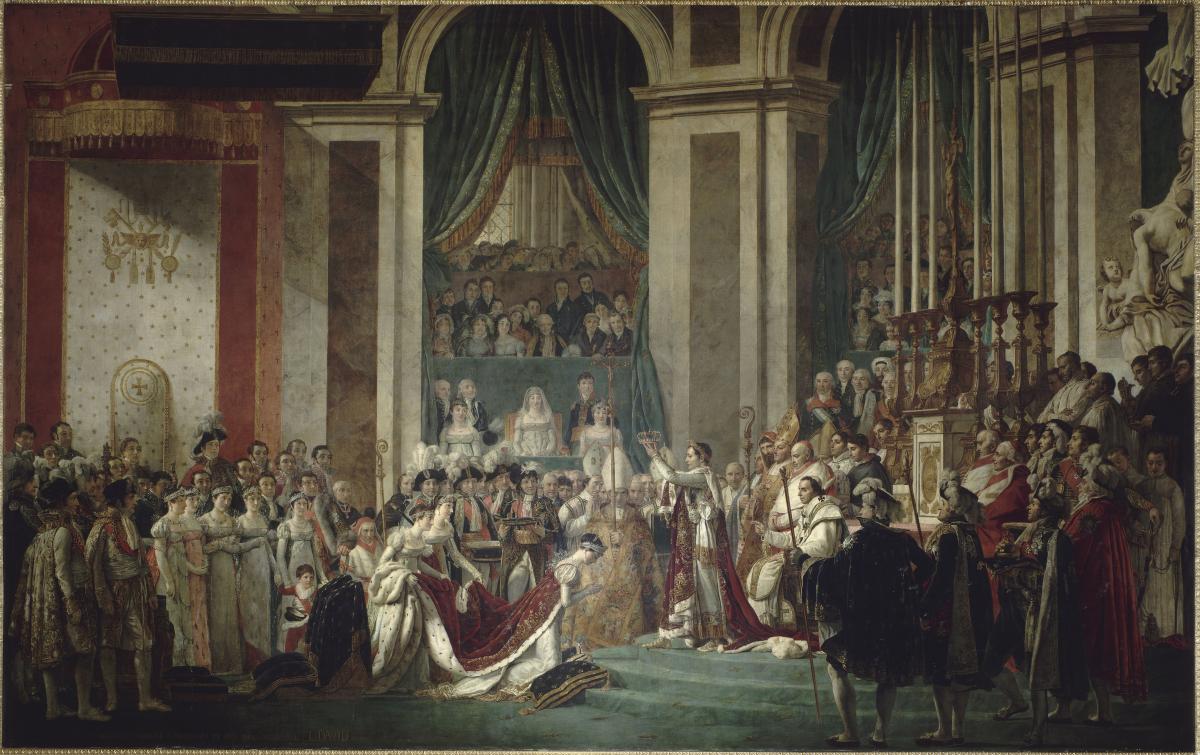
David, The Consecration of the Emperor Napoleon and the Coronation of Empress Josephine on December 2, 1804
© RMN (Château de Versailles) / Peter Willi
The Historic galleries also include
- The 1830 Room
- The Gallery of Great Battles
- The Empire Rooms
- The Africa, Crimea and Italy Rooms
- The 1792 Room
- The Crusades Rooms
- The North and South Attics



